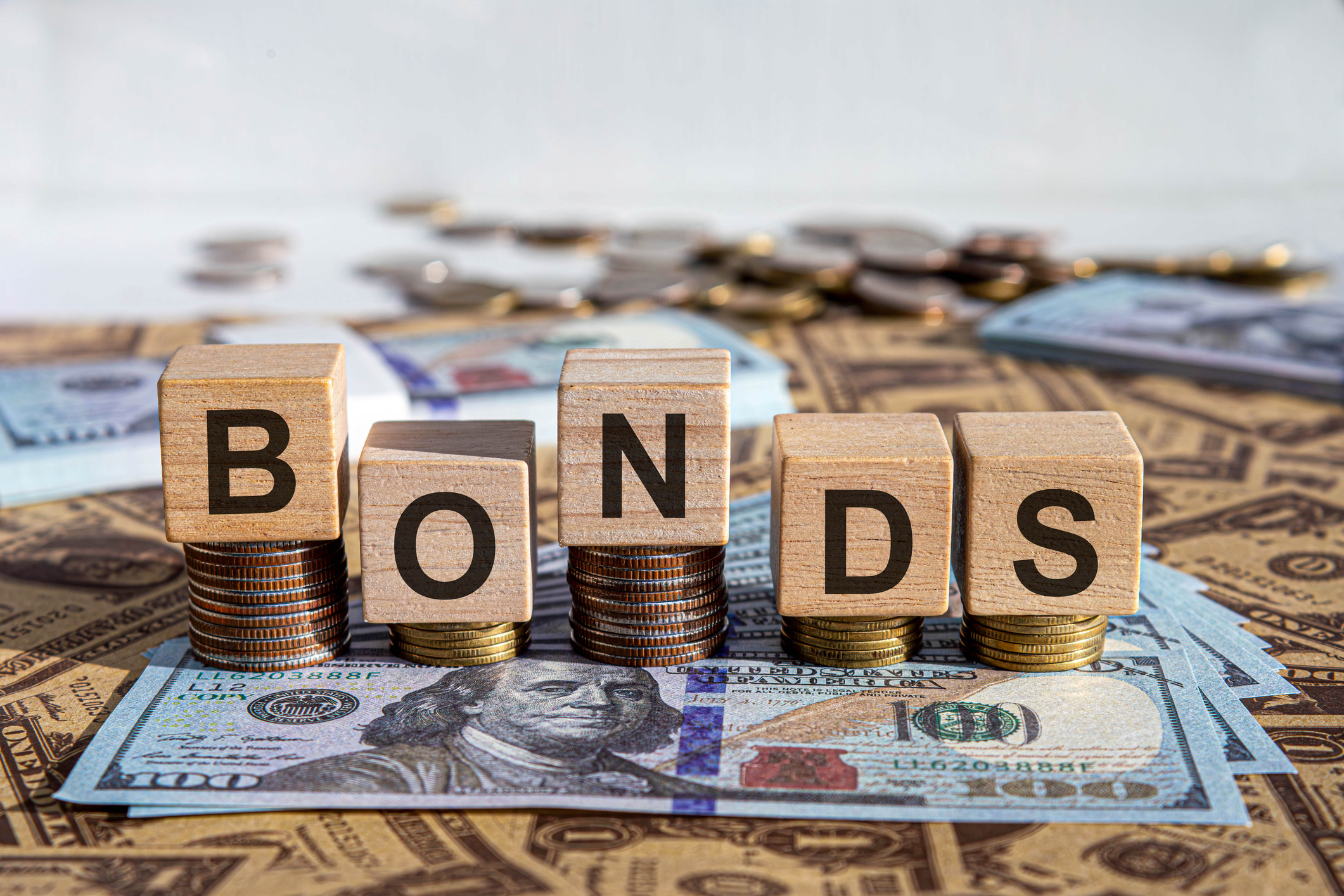I'm a Financial Adviser: Here's How a Three-Part Retirement 'Crash Plan' Can Prepare You for Market Turbulence
Having a tailored plan ready to go when markets get wild — covering how you'll handle income, rebalancing and taxes — can be the ultimate secret weapon for a low-anxiety, successful retirement.

As a longtime financial adviser, I've met many people who have at least a basic plan for managing their portfolios in retirement.
Most have a good idea of the amount of money they have stashed in savings and investments, and they've estimated how long they can expect those funds to last if they stick to their retirement budget and withdrawal strategy.
This is great. I'm a big believer that getting and keeping your finances on track goes a long way toward helping things go right in retirement.
From just $107.88 $24.99 for Kiplinger Personal Finance
Become a smarter, better informed investor. Subscribe from just $107.88 $24.99, plus get up to 4 Special Issues

Sign up for Kiplinger’s Free Newsletters
Profit and prosper with the best of expert advice on investing, taxes, retirement, personal finance and more - straight to your e-mail.
Profit and prosper with the best of expert advice - straight to your e-mail.
Kiplinger's Adviser Intel, formerly known as Building Wealth, is a curated network of trusted financial professionals who share expert insights on wealth building and preservation. Contributors, including fiduciary financial planners, wealth managers, CEOs and attorneys, provide actionable advice about retirement planning, estate planning, tax strategies and more. Experts are invited to contribute and do not pay to be included, so you can trust their advice is honest and valuable.
But I'd also argue that preparing a course of action, or a "crash plan," for when things go wrong can be just as important, if not more.
Plan for what you can control
You can't control which candidate gets into office, which country goes to war, what the Fed does with interest rates or all the other factors that can impact markets — and your portfolio.
But you can control what you do with your nest egg when the market goes through a correction, a downturn or worse.
A crash plan can be like the list of emergency procedures that's tucked into the seat-back pocket of an airplane, although your financial crash plan should be tailored specifically to you. It doesn't need constant monitoring, but you'll know it's there when you need it most.
Having a clear plan for what to do (or not do) when market turbulence is making you nervous can help keep you from making rushed or emotional decisions, which often lead to mistakes.
It can also highlight potential actions that could put you in a better place once markets recover.
A good crash plan should cover three main areas:
1. Income sources
Income planning is one of the most important parts of preparing for retirement — but without an emergency income strategy, your plan is incomplete.
If portfolio withdrawals are an integral part of your retirement paycheck, your crash plan can show you where to make adjustments when the markets get bumpy. When the market goes down, cash and cash equivalents in your portfolio can be a valuable backup.
If stock dividends are slashed, or if you've been selling stocks to fund your retirement, you can pause that action temporarily and draw from those backups or other guaranteed sources (such as interest from a multiyear guaranteed annuity or MYGA) to make up the difference.
This can be especially valuable when it comes to mitigating sequence of returns risk, which can have a devastating effect on the longevity of a new retiree's nest egg.
2. Rebalancing
During a downturn, your crash plan can also remind you of the benefits of "buying low."
If you have a well-diversified retirement portfolio, you likely have some assets that are uncorrelated to the market or even non-traded.
This presents an opportunity to take any extra funds from those parts of your portfolio and buy quality stocks that you already might own, but at a massive discount.
Looking for expert tips to grow and preserve your wealth? Sign up for Adviser Intel (formerly known as Building Wealth), our free, twice-weekly newsletter.
Once market pricing recovers, you can skim the cream off the top of those investments and put those dollars back into the assets from which they originally came.
How many times have you wished you'd bought a household-name stock when it was 30% off? This might be your chance. But you have to be ready to move when the time is right.
3. Tax strategies
A down market can also provide an opportunity to do some tax-loss harvesting — selling investments in taxable accounts that have lost value to offset capital gains elsewhere and reduce the taxes you owe.
This can be a complicated process, and there are IRS rules to consider, such as the "wash-sale rule," which prohibits claiming a loss on the sale of an investment if the same or a "substantially identical" investment is purchased 30 days before or after the sale date.
Despite its potential complexity, tax-loss harvesting can be a useful strategy for reducing current-year taxes and/or helping with portfolio rebalancing. Here's an example of how it can work:
Let's say Mary wanted to renovate her kitchen, but being a high earner, she was aware of what accessing the necessary funds from her IRA might mean for her tax bill.
Then, in 2020, when the COVID-19 pandemic hit, the energy sector crashed, resulting in a large paper loss on the ExxonMobil (XOM) stock that she held in her taxable brokerage account.
Mary also owned Amazon (AMZN) stock, which had reached a bloated position in her portfolio and kept growing during the pandemic.
Using the loss-harvesting strategy in her crash plan, Mary sold ExxonMobil at a loss and immediately bought Chevron (CVX) stock, which was also down, with the proceeds (avoiding a wash sale). She then sold an equal amount of her Amazon stock.
The result?
- Mary got the money she needed for her renovation virtually tax-free.
- She was able to trim Amazon from its oversize allocation and stay invested in energy by owning Chevron.
- As the energy sector recovered, her Chevron investment grew to match what she owned in ExxonMobil before the crash.
Another tax strategy that could be included in your crash plan is a Roth conversion.
Owning a Roth account can have many benefits, but the tax hit when you make the conversion can be off-putting. If the markets are down, however, you might be able to get more bang for your buck if you move securities to a Roth.
If those stocks make a comeback inside the Roth, any growth you might realize would be tax-exempt.
Bottom line: A crash plan can help lower anxiety in retirement
I know it might sound funny, but preparing for the worst is the best way to succeed at retirement (unless you don't mind white-knuckling the arms of your favorite chair every time the economic news is grim).
Knowing you have a crash plan in place can allow you to worry less about market uncertainty and focus more on enjoying life's longest vacation.
Kim Franke-Folstad contributed to this article.
The appearances in Kiplinger were obtained through a PR program. The columnist received assistance from a public relations firm in preparing this piece for submission to Kiplinger.com. Kiplinger was not compensated in any way.
Related Content
- Retirement Income Strategies for the Long Haul
- 10 Strategies to Consider When Retiring During a Volatile Market
- 12 Steps to Protect Your Retirement Savings From Market Volatility
- The Hidden Risk Lurking in Most Retirement Plans: Human Behavior
- I'm a Financial Planner: Here Are Five Phases of Retirement Planning You Have to Get Right
Profit and prosper with the best of Kiplinger's advice on investing, taxes, retirement, personal finance and much more. Delivered daily. Enter your email in the box and click Sign Me Up.

As founder and president of Retirement Risk Managers, Ken Clark is passionate about helping his clients protect their retirement savings from potential risks. Ken entered the financial services industry in 2014 as a licensed financial adviser with an independent firm, where he rose to partner by 2020. Recognizing the need for a more personalized and comprehensive approach to retirement planning, he founded Retirement Risk Managers in 2025 and developed the “Retire with MERIT” financial strategy.
-
 Changes Are Coming for This Invesco Bond Fund
Changes Are Coming for This Invesco Bond FundThe Invesco BulletShares 2026 Corporate Bond ETF's bonds will mature in 2026. Here's what investors should do.
-
 What Science Reveals About Money and a Happy Retirement
What Science Reveals About Money and a Happy RetirementWhether you’re still planning or already retired, these research-based insights point the way to your best post-work life.
-
 7 Retirement Planning Trends: What They Mean for You in 2026
7 Retirement Planning Trends: What They Mean for You in 2026From government shutdowns to market swings, the past 12 months have been nothing if not eventful. The key trends can help you improve your own financial plan.
-
 Changes Are Coming for This Invesco Bond Fund
Changes Are Coming for This Invesco Bond FundThe Invesco BulletShares 2026 Corporate Bond ETF's bonds will mature in 2026. Here's what investors should do.
-
 What Science Reveals About Money and a Happy Retirement
What Science Reveals About Money and a Happy RetirementWhether you’re still planning or already retired, these research-based insights point the way to your best post-work life.
-
 7 Retirement Planning Trends in 2025: What They Mean for Your Wealth in 2026
7 Retirement Planning Trends in 2025: What They Mean for Your Wealth in 2026From government shutdowns to market swings, the past 12 months have been nothing if not eventful. The key trends can help you improve your own financial plan.
-
 What Defines Wealth: Soul or Silver? Good King Wenceslas' Enduring Legacy in the Snow
What Defines Wealth: Soul or Silver? Good King Wenceslas' Enduring Legacy in the SnowThe tale of Good King Wenceslas shows that true wealth is built through generosity, relationships and the courage to act kindly no matter what.
-
 An Investing Pro's 5 Moves to Help Ensure 2025's Banner Year in the Markets Continues to Work Hard for You in 2026
An Investing Pro's 5 Moves to Help Ensure 2025's Banner Year in the Markets Continues to Work Hard for You in 2026After a strong 2025 in the stock market, be strategic by rebalancing, re-investing with a clear purpose and keeping a disciplined focus on your long-term goals.
-
 The Santa Claus Rally Officially Begins: Stock Market Today
The Santa Claus Rally Officially Begins: Stock Market TodayThe Santa Claus Rally is officially on as of Wednesday's closing bell, and initial returns are positive.
-
 How to Leave Different Amounts to Adult Children Without Causing a Rift
How to Leave Different Amounts to Adult Children Without Causing a RiftHere’s how to leave different amounts to adult children without causing a family rift.
-
 My Retirement Learning Curve, 1 Year In
My Retirement Learning Curve, 1 Year InA retiree checks in with what they wish they knew early on and what they've changed about their plan one year in.
